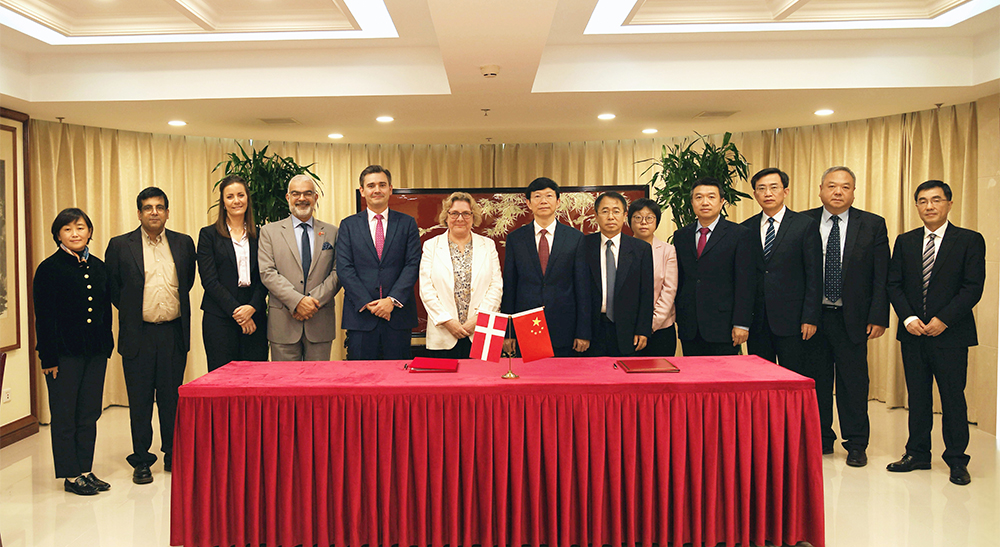吴荻教授组稿|桂健萍:肢端黑色素瘤的临床特征、分子病理学和免疫微环境特征
时间:2024-07-19 19:00:24 热度:37.1℃ 作者:网络
编者按:肢端黑色素瘤(肢端黑色素瘤,AM)是亚洲、非洲和西班牙裔人群中最常见的黑色素瘤亚型,其在流行病学、分子肿瘤及免疫微环境上与皮肤黑色素瘤特点(皮肤黑色素瘤,CM)明显不同。
本期「专家组稿」由吉林大学第一医院吴荻肿瘤教授担任执行主编,与吉林大学第一医院内科硕士桂健萍共同分享各端黑色素瘤的临床特征、分子病理学和免疫微环境特征,为医生和患者提供更多参考。
一、临床特征
1、患病比例
不同种族间各黑色素瘤亚型患病比例差异巨大。CM是高加索人种最常见的黑色素瘤亚型,约占所有黑色素瘤的90%左右,而AM在白种人中少见,约占1%-2%。AM是亚洲人和其他有色人种中最主要的黑色素瘤亚型[1],约占我国所有黑色素瘤的41.8%[2]。
2、性别
在世界大多数地区,CM的发病率是男性高于女性[3]。并未发现AM的发病率存在性别上的显著差异,仅部分研究显示女性患者数量上的微弱优势(52.4%-59.3%)[4-7]。与男性患者相比,女性患者的预后更好[5, 8, 9]。更关注身体变化的倾向、暴露于外界环境中危险因素的差异或性激素水平和免疫反应的不同可能是造成这些预后差异的原因[10-12]。
3、年龄
AM的中位发病年龄通常为62-66岁,较CM(54-62岁)晚[4-7, 13-18]。高龄与较差的预后有关[5, 6]。
4、种族
既往的回顾性研究发现了不同种族的AM患者在疾病分期、breslow厚度、溃疡率和预后方面的差异。除了与种族间的遗传因素差异有关,收入状况、社会福利、保险状况、受教育程度和治疗类型等社会经济因素也是造成这些差异的原因之一[19-21]。
5、危险因素
AM的危险因素与CM不同,AM不太可能与紫外线损伤有关。创伤可能是导致AM发生发展的危险因素。越来越多的回顾性研究揭示了创伤与AM之间的潜在关联[22-24]。虽然创伤不一定会导致AM的发展,但它对AM的影响不容被忽视。
二、分子遗传学特征
1、染色体结构变异及拷贝数变异
AM 、MM和CM显示出许多相似的染色体结构变异和拷贝数变异,如6p、8q染色体的增益和6q、9和10染色体的丢失[25]。既往多项研究发现AM的染色体结构变异多发生在5号染色体、11号染色体和12号染色体,在5p染色体、11q染色体着丝粒周围和12q染色体着丝粒周围经常出现kataegis位点、重排和扩增[8]。
AM主要的的拷贝数变异,包括CCND1、GAB2、PAK1、TERT、YAP1、MDM2、CDK4、NOTCH2、KIT和EP300扩增,以及CDKN2A和NF1以及PTEN的缺失[8, 26, 27]。
2、肿瘤突变负荷
AM的肿瘤突变负荷(tumor mutation burden,TMB)(每兆碱基1.92-2.1个突变)与MM的TMB相近(每兆碱基2.7-4.53个突变),比CM(每兆碱基36.3-49.17个突变)要低得多[25, 28-30]。
AM和CM一样,不同原发肿瘤部位的TMB存在显著差异。在CM中,病变部位在头颈部的黑色素瘤的TMB最高。在AM中,原发于甲床的黑色素瘤较其他部位肿瘤的TMB更高[25]。既往研究发现,具有紫外线辐射特征的AM最常发生在甲床,表明甲板对UVR的遮挡并不完全[8]。
3、驱动基因突变
AM中主要的突变基因是BRAF(21.3%-30%)、NRAS(18.4%-28%)、KIT(6%-11.5%)、NF1(11.5%-14%)、TYRP1(8%)、PTEN(6.9%)和 NOTCH2(4.6%)[8, 26, 27]。
不同发病部位AM的驱动基因突变频率略有差异。多项AM基因组测序研究发现KIT突变多见于在病变部位在甲床的AM,而BRAF和NRAS突变则更常见于非甲床AM[8, 31, 32]。
三、肿瘤免疫微环境特点
Nakamura等人的研究发现ALM的TIL总数和CD8 TIL计数均显著低于CM(P<0.01)[33]。在Li团队的研究中,与非肢端皮肤黑色素瘤数据集(GSE115978和GSE72056)相比,AM的CD8T细胞和NK细胞明显减少,γδT细胞极少,平均免疫浸润率较低(39.1% vs 71.2% vs 67.6%)[34]。
据现有文献报导,AM中PD-L1的表达率约为13.6%-31%,远低于CM(44.7%-62%)[35, 36]。
TIME中的M2巨噬细胞可能与黑色素瘤的局部进展、侵袭性、转移和不良预后有关。Zúñiga-Castillo团队发现与浅表扩散性黑色素瘤相比,ALM肿瘤微环境中M2巨噬细胞的密度更高[37]。
总结
AM是一种发病率低且预后不佳的恶性肿瘤。AM患病率没有明显的性别差异,相较于CM,其发病年龄更晚。创伤可能与AM发生发展有关。男性和高龄与AM较差的预后有关。社会经济因素是造成不同种族间AM患者预后的差异之一。
与CM高频的单核苷酸变异及插入缺失突变不同,AM的分子遗传学特点和MM相近,主要以结构变异和拷贝数变异为主。不同病变部位的AM驱动基因的突变频率略有差异。
AM表现出抑制性的肿瘤免疫微环境。相较于CM,AM的PD-L1表达水平低及肿瘤浸润淋巴细胞浸润不足。
参考文献:
1. Bai, X., L. Mao, and J. Guo, Comments on Chinese guidelines for diagnosis and treatment of melanoma 2018 (English version). Chin J Cancer Res, 2019. 31(5): p. 740-741.
2. Chi, Z., et al., Clinical presentation, histology, and prognoses of malignant melanoma in ethnic Chinese: a study of 522 consecutive cases. BMC Cancer, 2011. 11: p. 85.
3. Arnold, M., et al., Global Burden of Cutaneous Melanoma in 2020 and Projections to 2040. JAMA Dermatol, 2022. 158(5): p. 495-503.
4. Huang, K., J. Fan, and S. Misra, Acral Lentiginous Melanoma: Incidence and Survival in the United States, 2006-2015, an Analysis of the SEER Registry. J Surg Res, 2020. 251: p. 329-339.
5. Bian, S.X., et al., Acral lentiginous melanoma-Population, treatment, and survival using the NCDB from 2004 to 2015. Pigment Cell Melanoma Res, 2021. 34(6): p. 1049-1061.
6. Asgari, M.M., et al., Prognostic factors and survival in acral lentiginous melanoma. Br J Dermatol, 2017. 177(2): p. 428-435.
7. Kolla, A.M., et al., Acral Lentiginous Melanoma: A United States Multi-Center Substage Survival Analysis. Cancer Control, 2021. 28: p. 10732748211053567.
8. Newell, F., et al., Whole-genome sequencing of acral melanoma reveals genomic complexity and diversity. Nat Commun, 2020. 11(1): p. 5259.
9. Lino-Silva, L.S., et al., Acral Lentiginous Melanoma: Survival Analysis of 715 Cases. J Cutan Med Surg, 2019. 23(1): p. 38-43.
10. de Giorgi, V., et al., Oestrogen receptor beta and melanoma: a comparative study. Br J Dermatol, 2013. 168(3): p. 513-9.
11. Fisher, D.E. and A.C. Geller, Disproportionate burden of melanoma mortality in young U.S. men: the possible role of biology and behavior. JAMA Dermatol, 2013. 149(8): p. 903-4.
12. Rockberg, J., et al., Epidemiology of cutaneous melanoma in Sweden-Stage-specific survival and rate of recurrence. Int J Cancer, 2016. 139(12): p. 2722-2729.
13. Bradford, P.T., et al., Acral lentiginous melanoma: incidence and survival patterns in the United States, 1986-2005. Arch Dermatol, 2009. 145(4): p. 427-34.
14. Lv, J., et al., Acral Melanoma in Chinese: A Clinicopathological and Prognostic Study of 142 cases. Sci Rep, 2016. 6: p. 31432.
15. Chen, M.L., et al., Differences in Thickness-Specific Incidence and Factors Associated With Cutaneous Melanoma in the US From 2010 to 2018. JAMA Oncol, 2022. 8(5): p. 755-759.
16. Chan, K.K., et al., Clinical Patterns of Melanoma in Asians: 11-Year Experience in a Tertiary Referral Center. Ann Plast Surg, 2016. 77 Suppl 1: p. S6-s11.
17. Zell, J.A., et al., Survival for patients with invasive cutaneous melanoma among ethnic groups: the effects of socioeconomic status and treatment. J Clin Oncol, 2008. 26(1): p. 66-75.
18. Metelitsa, A.I., et al., A population-based study of cutaneous melanoma in Alberta, Canada (1993-2002). J Am Acad Dermatol, 2010. 62(2): p. 227-32.
19. Behbahani, S., S. Malerba, and F.H. Samie, Racial and ethnic differences in the clinical presentation and outcomes of acral lentiginous melanoma. Br J Dermatol, 2021. 184(1): p. 158-160.
20. Yan, B.Y., et al., Survival differences in acral lentiginous melanoma according to socioeconomic status and race. J Am Acad Dermatol, 2022. 86(2): p. 379-386.
21. Huang, K., et al., Comparative Analysis of Acral Melanoma in Chinese and Caucasian Patients. J Skin Cancer, 2020. 2020: p. 5169051.
22. Zhang, N., et al., The association between trauma and melanoma in the Chinese population: a retrospective study. J Eur Acad Dermatol Venereol, 2014. 28(5): p. 597-603.
23. Lee, J.H., et al., Frequency of Trauma, Physical Stress, and Occupation in Acral Melanoma: Analysis of 313 Acral Melanoma Patients in Korea. Ann Dermatol, 2021. 33(3): p. 228-236.
24. Jung, H.J., et al., A clinicopathologic analysis of 177 acral melanomas in Koreans: relevance of spreading pattern and physical stress. JAMA Dermatol, 2013. 149(11): p. 1281-8.
25. Newell, F., et al., Comparative Genomics Provides Etiologic and Biological Insight into Melanoma Subtypes. Cancer Discov, 2022. 12(12): p. 2856-2879.
26. Zaremba, A., et al., Clinical and genetic analysis of melanomas arising in acral sites. Eur J Cancer, 2019. 119: p. 66-76.
27. Yeh, I., et al., Targeted Genomic Profiling of Acral Melanoma. J Natl Cancer Inst, 2019. 111(10): p. 1068-1077.
28. Hayward, N.K., et al., Whole-genome landscapes of major melanoma subtypes. Nature, 2017. 545(7653): p. 175-180.
29. Newell, F., et al., Whole-genome landscape of mucosal melanoma reveals diverse drivers and therapeutic targets. Nat Commun, 2019. 10(1): p. 3163.
30. Zhou, R., et al., Analysis of Mucosal Melanoma Whole-Genome Landscapes Reveals Clinically Relevant Genomic Aberrations. Clin Cancer Res, 2019. 25(12): p. 3548-3560.
31. Shi, Q., et al., Integrative Genomic Profiling Uncovers Therapeutic Targets of Acral Melanoma in Asian Populations. Clin Cancer Res, 2022. 28(12): p. 2690-2703.
32. Holman, B.N., et al., Clinical and molecular features of subungual melanomas are site-specific and distinct from acral melanomas. Melanoma Res, 2020. 30(6): p. 562-573.
33. Nakamura, Y., et al., Poor Lymphocyte Infiltration to Primary Tumors in Acral Lentiginous Melanoma and Mucosal Melanoma Compared to Cutaneous Melanoma. Front Oncol, 2020. 10: p. 524700.
34. Li, J., et al., Single-cell Characterization of the Cellular Landscape of Acral Melanoma Identifies Novel Targets for Immunotherapy. Clin Cancer Res, 2022. 28(10): p. 2131-2146.
35. Nakamura, Y., et al., Acral lentiginous melanoma and mucosal melanoma expressed less programmed-death 1 ligand than cutaneous melanoma: a retrospective study of 73 Japanese melanoma patients. J Eur Acad Dermatol Venereol, 2019. 33(11): p. e424-e426.
36. Kaunitz, G.J., et al., Melanoma subtypes demonstrate distinct PD-L1 expression profiles. Lab Invest, 2017. 97(9): p. 1063-1071.
37. Zúñiga-Castillo, M., N.V. Pereira, and M.N. Sotto, High density of M2-macrophages in acral lentiginous melanoma compared to superficial spreading melanoma. Histopathology, 2018. 72(7): p. 1189-1198.


